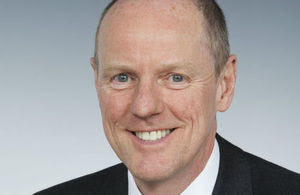SATs results show more primary pupils reach the highest standards

Increase in pupils reaching the highest standard at the end of primary school
More pupils in England are reaching the highest standards of reading, writing and maths than last year, data from this year’s key stage 2 assessments – better known as SATs – shows.
The statistics also show that typically the longer a primary school has been an academy, the better its results. 71% of pupils in converter academies open for 8 or more years met the expected standard in reading, writing and maths compared to 66% of pupils in those open for one year.
Results in sponsored academies – those that were typically converted due to previous poor performance – have also increased nationally, driven by greater improvements in those that have been open for longer.
Statistics published today also show:
- 65% pupils reached the expected standard in reading, writing and maths (combined), and 11% pupils reached the higher standard – meaning they are working at a level beyond that expected of primary pupils – in all three subjects, up from 10% last year
- 85% of pupils who met the phonics standard in year 1 attained the expected standard in reading at the end key stage 2
- The attainment gap between disadvantaged pupils and their peers has narrowed by 13% since 2011 based on the Disadvantage Gap Index
- The attainment gap in reading, writing and maths (combined) between pupils whose first language isn’t English and those who speak it as their first language has almost disappeared – going down from 4 percentage points in 2016 to just 1 percentage point
- Sponsored academies open for two and five years have shown considerable improvement – each seeing 3 percentage point improvements
- London remains the best performing part of the country with Richmond upon Thames the best performing borough
This data has been released after initial data, published in July, showed 65% of pupils meet demanding standards in reading writing and maths – up from last year.
School Standards Minister Nick Gibb said:
We want all pupils to leave primary school equipped with the knowledge and skills that will help them to be successful in the rest of their education and beyond – that’s why I’m pleased to see an increase in pupils reaching the very highest standards at the end of primary school.
The fact that the attainment gap between disadvantaged pupils and their peers has significantly reduced since 2011 illustrates how the programme of reforms we’ve put in place since 2010 is helping to level the playing field.
We reformed Key Stage 2 tests in 2016 to make sure they assessed schools’ performance in equipping pupils to understand the new, improved primary curriculum. These results are testament to the hard work of pupils, parents and teachers.
This year’s results are the fourth to be released following the introduction of more rigorous assessments in summer 2016, bringing primary education in line with the best in the world.
The attainment gap between disadvantaged students and their more affluent peers has fallen between 2011 and 2018. And in 2016 England achieved its highest ever score in the international PIRLs literacy study. This follows a greater focus on reading in the primary curriculum, and a particular focus on phonics.
National Curriculum Assessments – better known as SATs – are intended as a measure of school standards, as opposed to individual pupils. They enable government to hold primary schools to account for their performance and also highlight where pupils may need additional support when they arrive in secondary school












Responses